Abstract
1. The effects of bacterial infection and temperature on serum iron levels were investigated in the lizard Dipsosaurus dorsalis. 2. Changes in body temperature from normal (38 degrees C) to febrile (41 degrees C) did not alter serum iron levels. Injection with Aeromonas hydrophila led to a significant reduction in serum iron levels, comparable to that found in mammals. This reduction in serum iron level was independent of the lizard's body temperature. 3. When grown in vitro, A. hydrophila grew equally well at afebrile (38 degrees C) and febrile (41 degrees C) temperatures. When the iron levels of the growth medium were reduced, the bacterial growth was diminished at the febrile temperature but was not significantly affected at the afebrile temperature. 4. The addition of iron supplements to bacterially infected lizards led to an increase in the percent mortality. 5. These results indicate that one of the mechanisms behind the beneficial, or adaptive value of fever in D. dorsalis is the decrease in iron available to the pathogenic micro-organisms.
Full text
PDF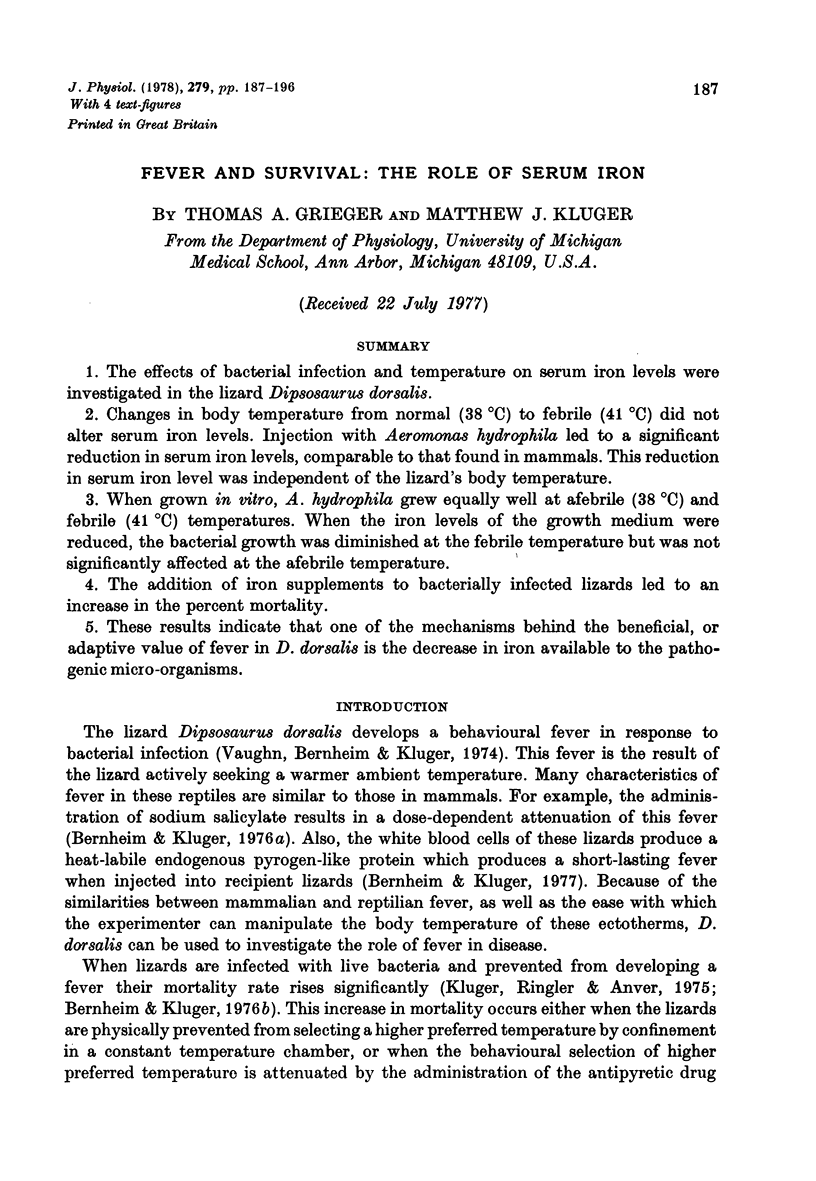
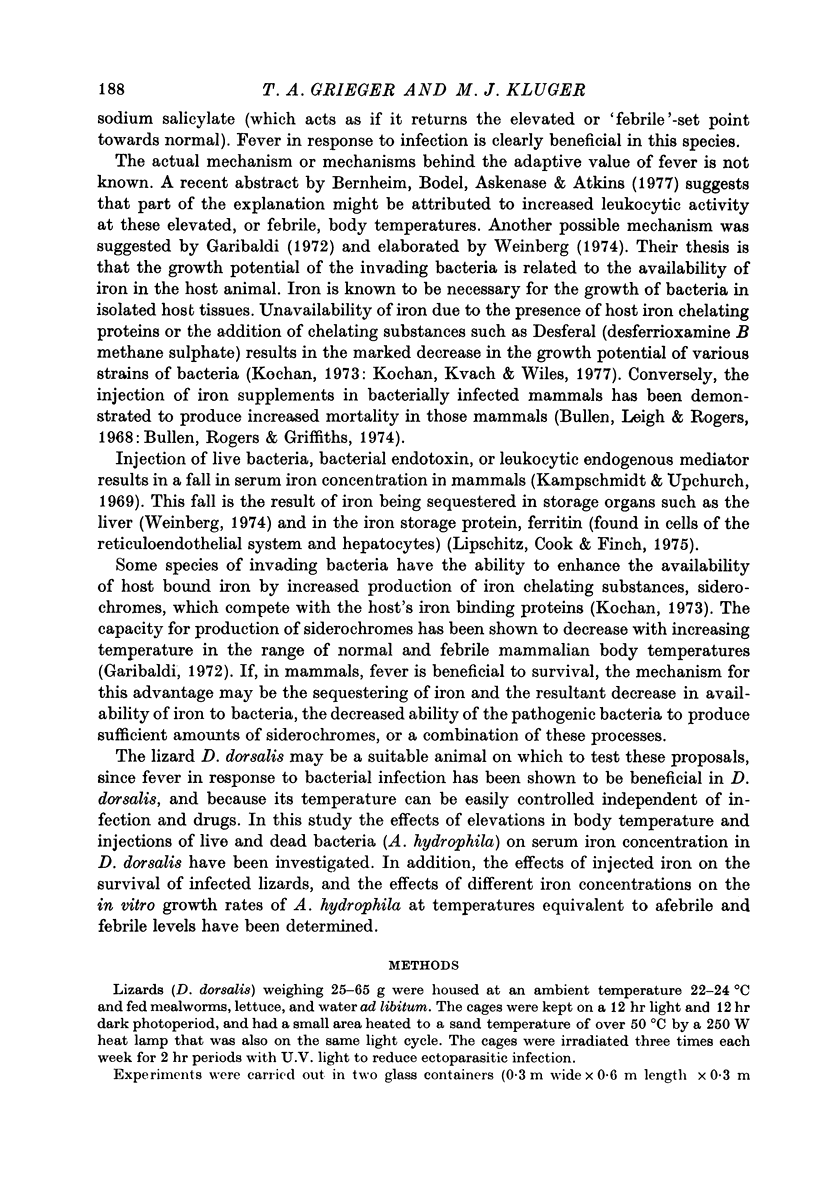

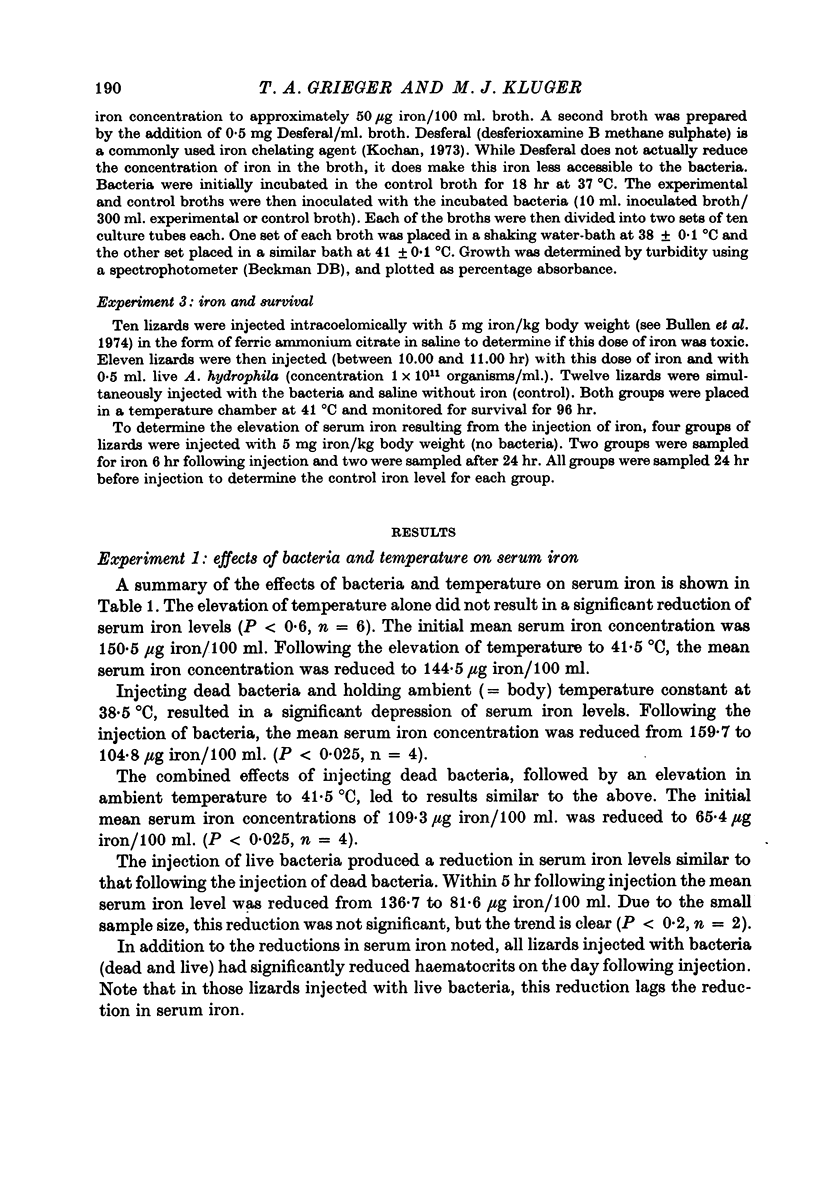
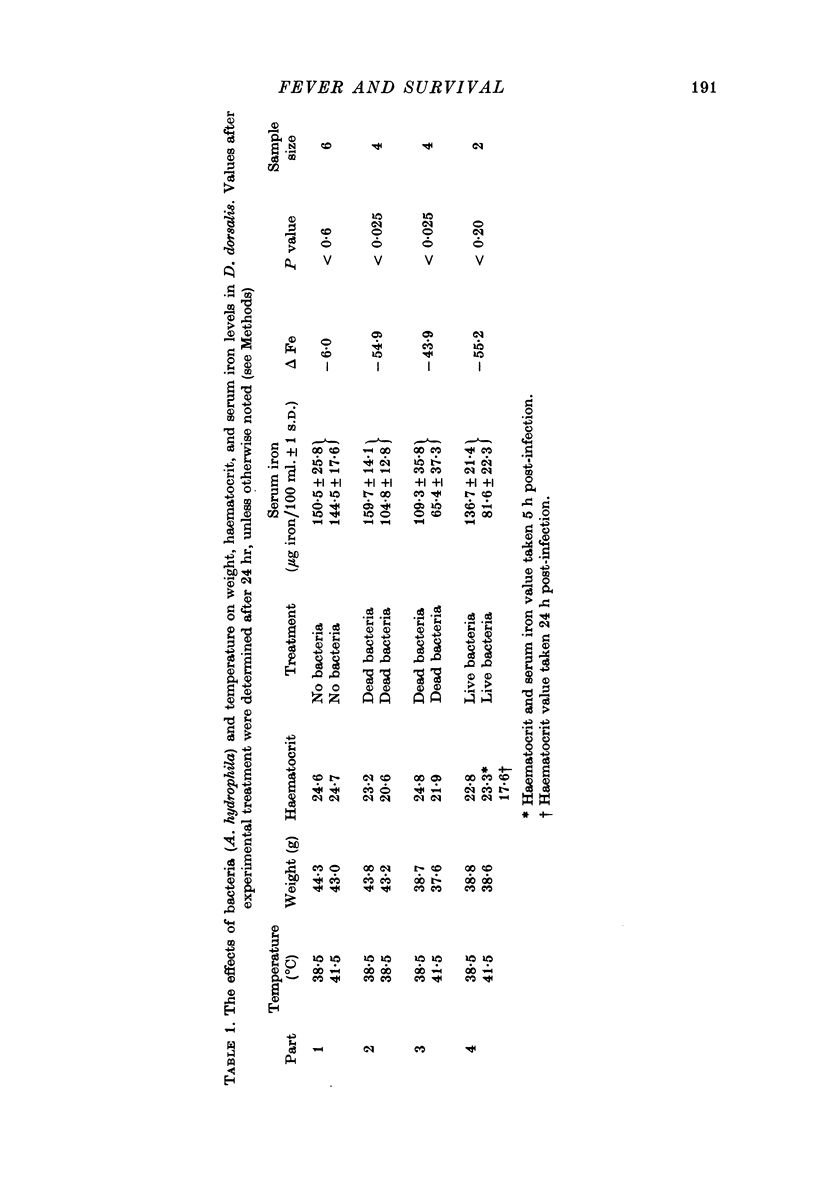
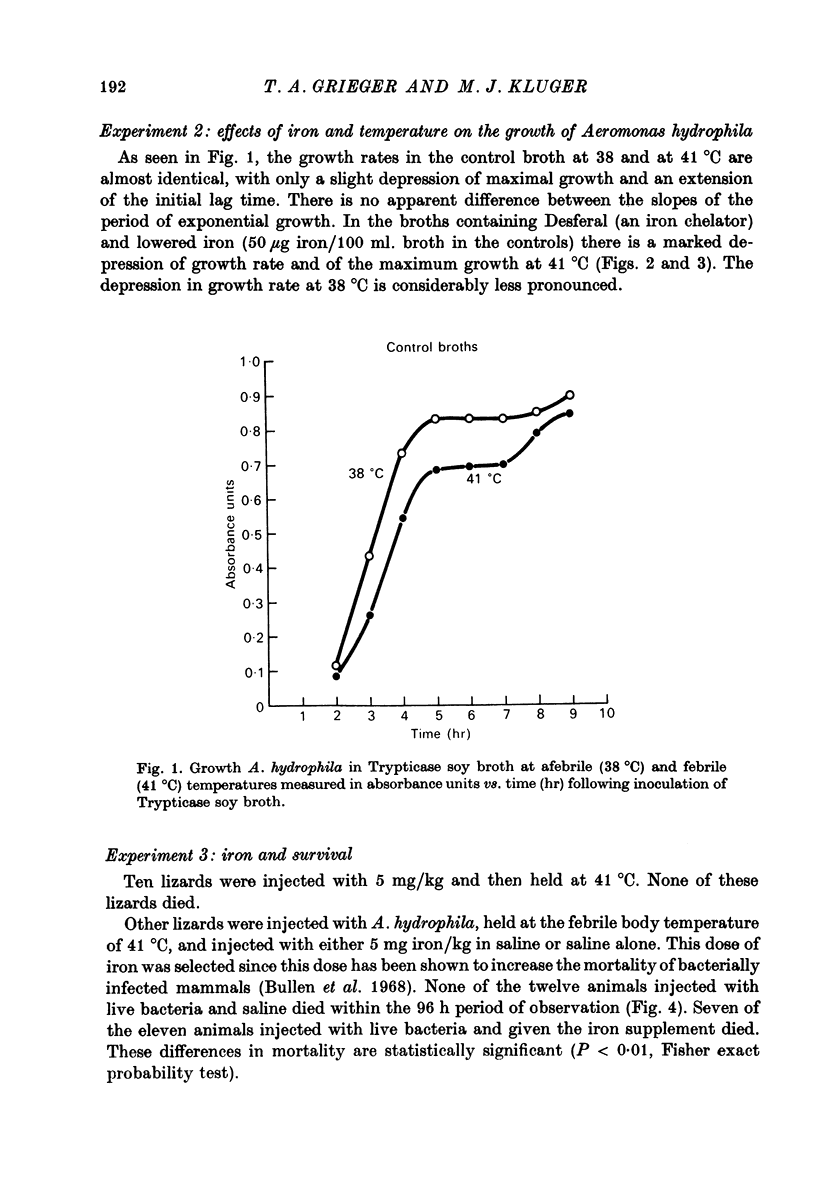
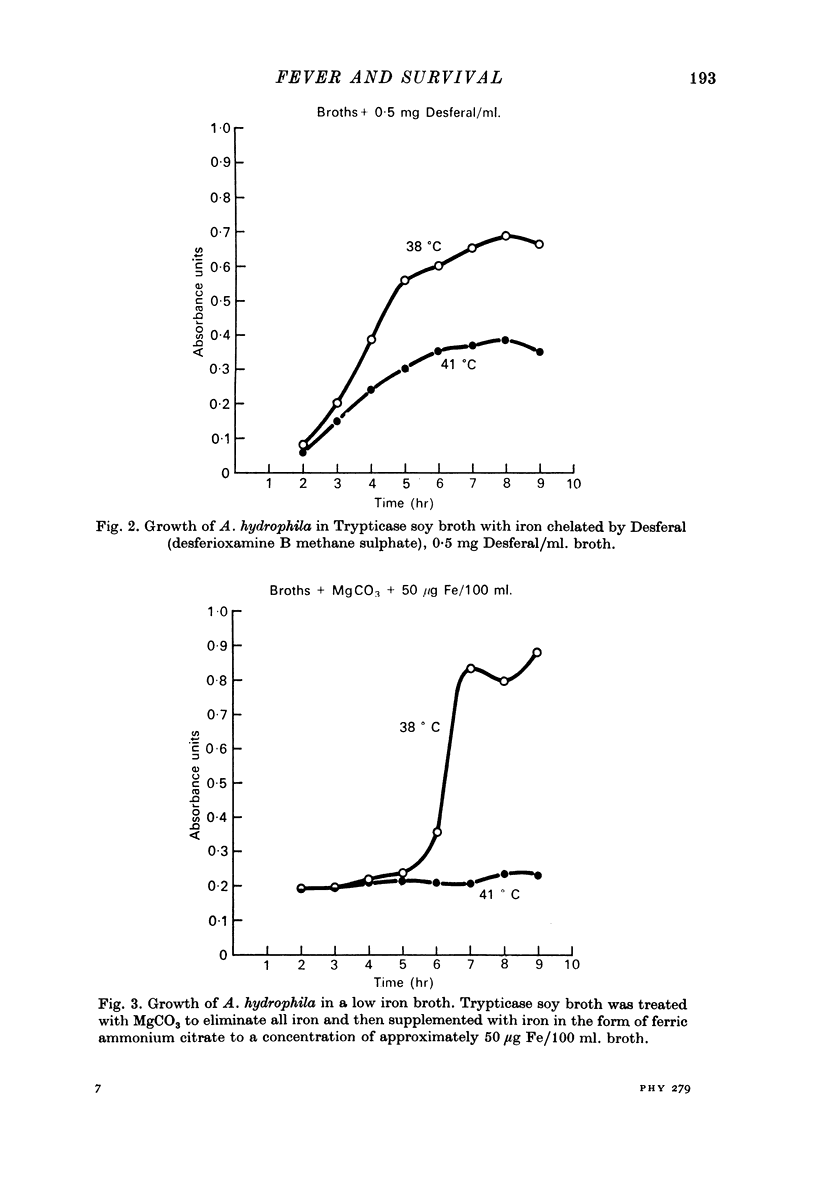
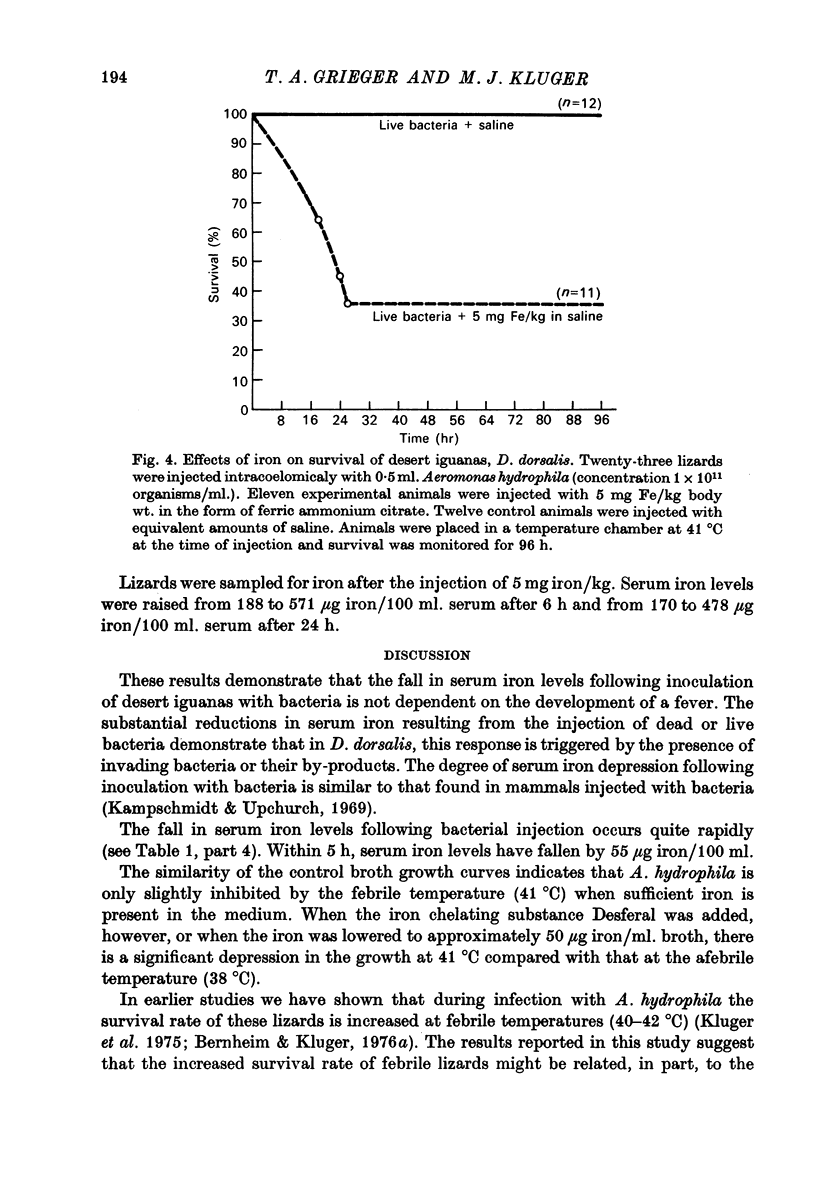
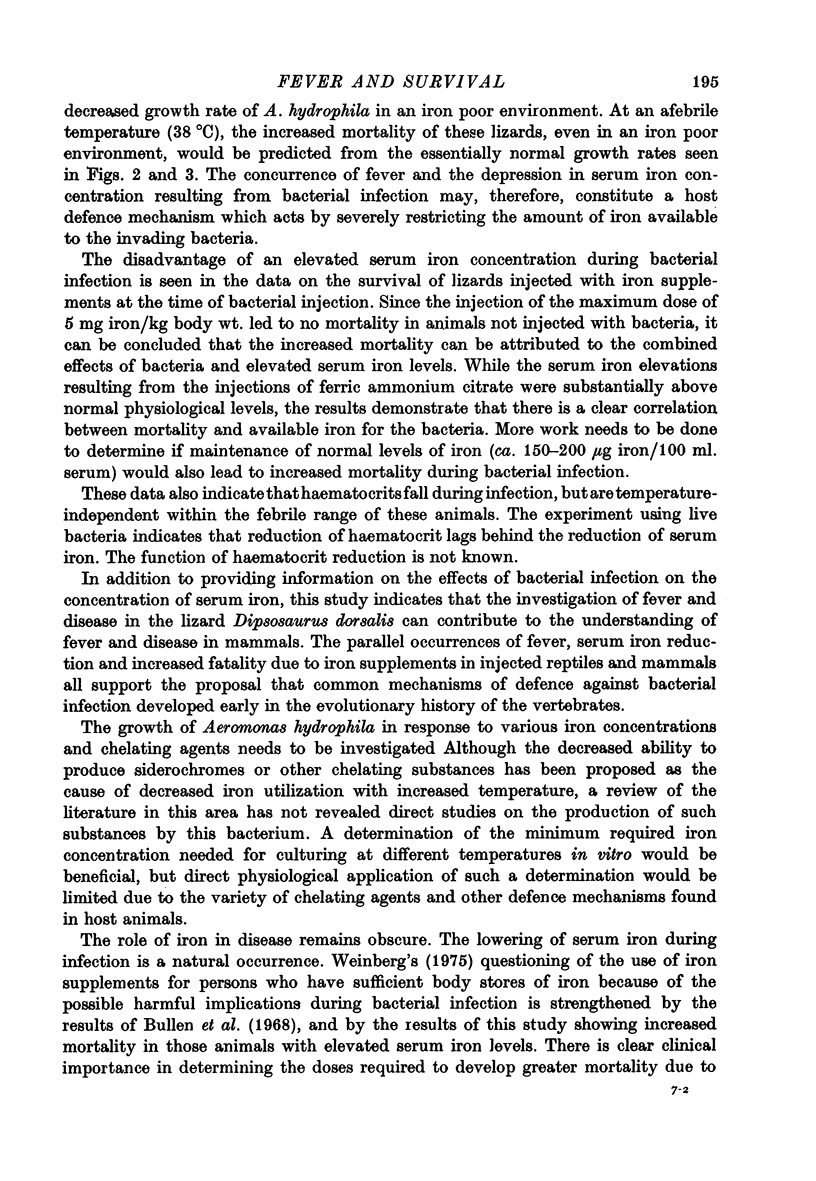
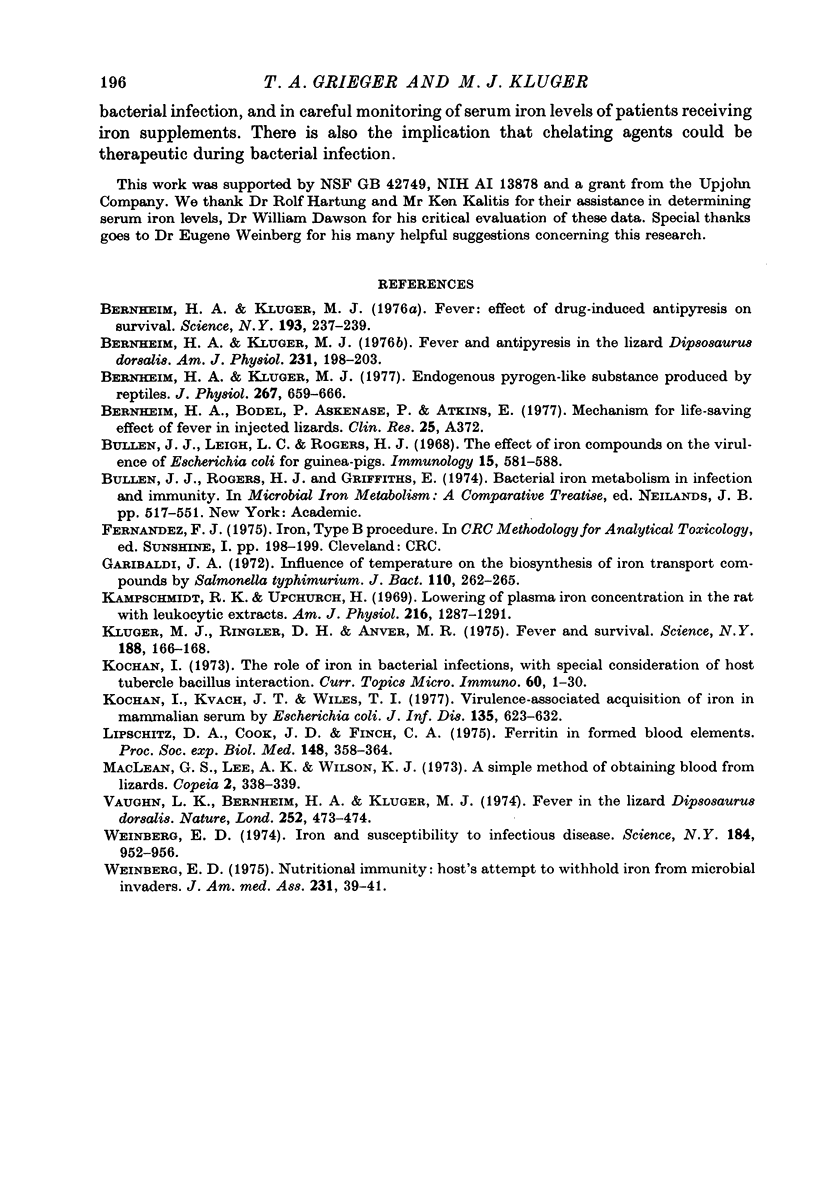
Selected References
These references are in PubMed. This may not be the complete list of references from this article.
- Bernheim H. A., Kluger M. J. Endogenous pyrogen-like substance produced by reptiles. J Physiol. 1977 Jun;267(3):659–666. doi: 10.1113/jphysiol.1977.sp011831. [DOI] [PMC free article] [PubMed] [Google Scholar]
- Bernheim H. A., Kluger M. J. Fever and antipyresis in the lizard Dipsosaurus dorsalis. Am J Physiol. 1976 Jul;231(1):198–203. doi: 10.1152/ajplegacy.1976.231.1.198. [DOI] [PubMed] [Google Scholar]
- Bernheim H. A., Kluger M. J. Fever: effect of drug-induced antipyresis on survival. Science. 1976 Jul 16;193(4249):237–239. doi: 10.1126/science.935867. [DOI] [PubMed] [Google Scholar]
- Bullen J. J., Leigh L. C., Rogers H. J. The effect of iron compounds on the virulence of Escherichia coli for guinea-pigs. Immunology. 1968 Oct;15(4):581–588. [PMC free article] [PubMed] [Google Scholar]
- Garibaldi J. A. Influence of temperature on the biosynthesis of iron transport compounds by Salmonella typhimurium. J Bacteriol. 1972 Apr;110(1):262–265. doi: 10.1128/jb.110.1.262-265.1972. [DOI] [PMC free article] [PubMed] [Google Scholar]
- Kampschmidt R. F., Upchurch H. Lowering of plasma iron concentration in the rat with leukocytic extracts. Am J Physiol. 1969 Jun;216(6):1287–1291. doi: 10.1152/ajplegacy.1969.216.6.1287. [DOI] [PubMed] [Google Scholar]
- Kluger M. J., Ringler D. H., Anver M. R. Fever and survival. Science. 1975 Apr 11;188(4184):166–168. [PubMed] [Google Scholar]
- Kochan I., Kvach J. T., Wiles T. I. Virulence-associated acquisition of iron in mammalian serum by Escherichia coli. J Infect Dis. 1977 Apr;135(4):623–632. doi: 10.1093/infdis/135.4.623. [DOI] [PubMed] [Google Scholar]
- Kochan I. The role of iron in bacterial infections, with special consideration of host-tubercle bacillus interaction. Curr Top Microbiol Immunol. 1973;60:1–30. doi: 10.1007/978-3-642-65502-9_1. [DOI] [PubMed] [Google Scholar]
- Lipschitz D. A., Cook J. D., Finch C. A. Ferritin in formed blood elements (38539). Proc Soc Exp Biol Med. 1975 Feb;148(2):358–364. doi: 10.3181/00379727-148-38539. [DOI] [PubMed] [Google Scholar]
- Vaughn L. K., Bernheim H. A., Kluger M. J. Fever in the lizard Dipsosaurus dorsalis. Nature. 1974 Dec 6;252(5483):473–474. doi: 10.1038/252473a0. [DOI] [PubMed] [Google Scholar]
- Weinberg E. D. Iron and susceptibility to infectious disease. Science. 1974 May 31;184(4140):952–956. doi: 10.1126/science.184.4140.952. [DOI] [PubMed] [Google Scholar]
- Weinberg E. D. Nutritional immunity. Host's attempt to withold iron from microbial invaders. JAMA. 1975 Jan 6;231(1):39–41. doi: 10.1001/jama.231.1.39. [DOI] [PubMed] [Google Scholar]


